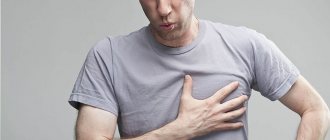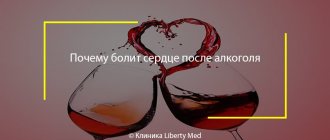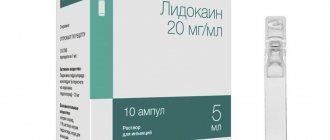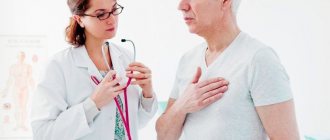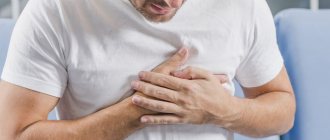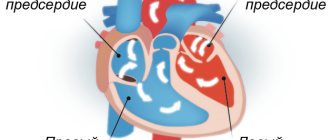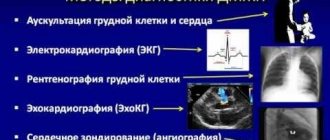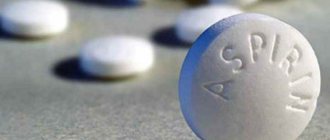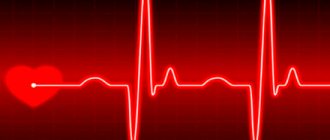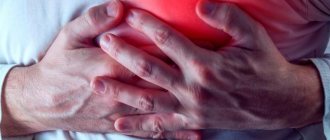Nina Andreeva-Ross Health June 03, 2020
Every third inhabitant of the planet suffers from arrhythmia, that is, a violation of the heart rhythm. Many do not consider this a disease at all and do not receive any treatment - until they suddenly lose consciousness on the street, and this often happens to young people. Moreover, 25% of ischemic strokes are associated with arrhythmia. If your heart beats out of sync, how can you restore its rhythm? The director of the National Medical Research Center for Surgery named after A. A. V. Vishnevsky, President of the Russian Society of Arrhythmology, Academician of the Russian Academy of Sciences Amiran REVISHVILI.
Photo: Pixabay/Pexels
— Amiran Shotaevich, what are the causes of arrhythmia? Why does the heart, which for the time being had a clear rhythm, suddenly begin to lose its rhythm?
— This could be due to many circumstances: heart disease, disorders of the autonomic nervous system, arterial hypertension, changes in hormonal status (the risk increases in menopausal women), thyroid disease, bad habits (smoking, alcohol), hypothermia and much more...
Including the same stress. Their constant “presence” triggers inflammatory processes in the body that destroy cardiac tissue and cause heart rhythm disturbances. Or emotional burnout syndrome. That is, a feeling of dissatisfaction with life combined with overwork and irritability - the heart rate can also suffer from it...
Therefore, I advise everyone to try to be optimistic, lead an active lifestyle, and walk in the fresh air for at least 45 minutes every day. Do not smoke and be sure to monitor your blood pressure.
— People are mainly familiar with three types of arrhythmias: tachyarrhythmia (with a heart rate of up to 120 - 150 beats per minute), bradyarrhythmia (with a heart rate of less than 55 beats per minute) and atrial fibrillation. But cardiologists say that there are many more varieties and each type is treated differently.
- This is true! In addition to tachycardia and bradycardia, arrhythmias are divided into supraventricular and ventricular, depending on what part of the heart they originated in. According to another classification, arrhythmia can be paroxysmal (paroxysmal) and constant (chronic).
There are also many arrhythmias, in which the heart beats unevenly. The most common of them are extrasystolic (premature contraction of the entire heart or just the ventricles) and atrial fibrillation (chaotic contraction of individual groups of muscle fibers, the pulse reaching 100 - 150 beats per minute).
Atrial fibrillation is one of those sudden disturbances in heart rhythm in which you should immediately call an ambulance. However, she is already one of the most frequent reasons for her arrival.
— How dangerous is this or that arrhythmia?
— With the same atrial fibrillation, there is a high risk of the formation of blood clots, which can move through the vessels and clog them, creating the threat of a heart attack or stroke. If rhythm disturbances are associated with a rare pulse, then there is a threat of short-term cardiac arrest, stopping blood circulation and leading to loss of consciousness.
Related article:
Scientists from St. Petersburg are creating a vaccine against coronavirus in the form of “yogurt”
But there are types of arrhythmias that are completely harmless and do not lead to significant consequences. The insidiousness of this disease is that arrhythmia can be asymptomatic. Therefore, even if you feel well, an irregular rhythm detected by a home blood pressure monitor is a reason to contact a cardiologist.
It is worth consulting with him, even if no further treatment is required. For example, sometimes patients complain of heart failure, freezing followed by a sharp jolt. This condition often occurs during physical activity or from excitement, and quite often occurs at rest. With such extrasystole, it is useful to take a sedative.
And, for example, during magnetic storms, sometimes this happens: an arrhythmia occurs, but after some time it goes away safely. But you need to know that at this time there was a slowdown in blood flow, which worsened the nutrition of vital organs, and even the blood became thicker. This means that you need to keep medications against the formation of clots in your blood vessels on hand. But a doctor must prescribe them.
There are also a few very simple tips that can somehow calm down a sudden strong heartbeat. If a person is simply very worried or afraid of something. Sit in a chair or lie on the bed, breathe slowly, deeply, measuredly - this will quickly normalize your rapid pulse. And one more thing: take a deep breath, pinch your nose, tense your stomach - your pulse will quickly return to normal.
You can use this psychological technique. Feeling an attack approaching, a person usually intuitively grabs his heart, as if trying to block the pain - he seems to calm the heart, giving it the command to beat slower. Give the same command to your heart: “Beat slower... Even slower...”.
— Atrial fibrillation, as you said, is one of the common causes of strokes. Is it possible to somehow get rid of it?
— Treatment must begin with the elimination of the underlying disease that led to the arrhythmia (for example, high blood pressure). There is also drug treatment. If the doctor has already accurately diagnosed “atrial fibrillation,” then he will prescribe it. If therapy does not help, then you should consider surgery - it is called ablation.
Until recently, arrhythmia was treated by open surgery with the connection of a cardiopulmonary bypass system. Although the focus of the disease is tiny, only a few millimeters, it is difficult to find. We have developed a new method for searching for this very source - an original procedure for computer surface mapping.
Electrodes are placed on the patient's body and they simultaneously record electrocardiograms. A lot - up to 240 cardiograms. The patient then undergoes an MRI of the chest. After processing the tomography results, the doctor receives a 3D model of the heart, on which the source of the arrhythmia is indicated with maximum accuracy. Today our technology is used in many countries around the world.
Once the source of the arrhythmia is identified, it is eliminated using a catheter procedure. Catheters are inserted through the femoral artery or vein, which, moving through the vessels, reach the heart and “cauterize” the arrhythmogenic zone. Treatment is carried out under X-ray control. Moreover, with the help of X-ray surgery, diagnosis and treatment are easier and faster. The procedure is performed under local anesthesia and takes no more than an hour and a half.
Today in Russia, electrocardiographic heart mapping technology is used in many clinics. Tens of thousands of procedures are performed, but the need is one and a half times greater.
Another procedure, the installation of a pacemaker, was worked out in the same way. It is required for patients with bradycardia. Every year more than 40 thousand operations are performed in the country, which is fifteen times more than was performed ten years ago, but three times less than necessary.
— What prevents all those in need from undergoing the procedure? Are there not enough medical centers?
— There are not enough highly qualified specialists! Each patient has a different type of arrhythmia, so there cannot be one standard operation for everyone.
In general, an arrhythmologist is a rather rare specialty. This is a multidisciplinary doctor. He must be equally proficient in all treatment methods (electrophysical diagnostics, catheter, thoracoscopic and surgical methods) in order to choose the treatment method that is optimal for the patient. To work independently, he needs to study for at least ten years and perform at least a thousand procedures during this period.
BY THE WAY
Experts give the following advice on preventing arrhythmia:
- To keep your heart working smoothly, include oranges, pears, raspberries, and currants in your diet. In winter, let it be frozen berries, it’s still good. The diet should also include red sweet peppers, tomatoes, beets, parsley, apples, and corn;
- a very healthy mixture of honey, walnuts, lemon, dried apricots and raisins. These products contain a lot of potassium, magnesium, calcium, which are needed for normal heart function;
— for arrhythmia and cardiovascular diseases, it is better to drink mint tea. Mint relieves irritability and calms. In this case, you should keep the liquid in your mouth longer and drink it in small sips. You could also take a mint candy before bed;
- An infusion of viburnum berries is also useful. It contains a large amount of vitamin K, which has a beneficial effect on the heart and blood vessels and normalizes cardiac activity. Viburnum is also rich in vitamin C, which strengthens the immune system, and vitamin P, which is necessary for the body to absorb ascorbic acid. This is why viburnum is indispensable for high blood pressure. The recipe is simple:
Pour 1 cup of fruit with 1 liter of hot water, put on low heat and let boil for 10 minutes. Then strain and cool. Drink half a glass three times a day;
— what about coffee? Scientists have come to the following conclusion: if a strong coffee overdose can lead to arrhythmia, then a couple of cups of good grain coffee a day, as it turns out, for some reason stabilize the heart rhythm. This mainly concerns atrial fibrillation.
#diseases #heart #health
The material was published in the newspaper “St. Petersburg Vedomosti” No. 094 (6692) dated 06/03/2020 under the title “If the heart beats out of sync.”
Share on VKontakte Facebook
Cool
Somersaulting heart - what kind of pathology is this?
Extrasystole is a pathological process in which a change in the normal myocardial rhythm is observed. The pathology is accompanied by extraordinary contractions of an intense nature, both of the entire human organ and of the individual ventricles.
As the disease develops, the release of blood from the myocardium decreases. The process leads to a decrease in coronary blood flow and in the veins supplying the brain.
This condition provokes the formation of angina pectoris, the occurrence of frequent cardiac fainting and paresis. The result of the pathology is the acquisition of atrial fibrillation by a person, as well as the possibility of sudden death.
Doctors say that pain and discomfort in the chest occurs in most people. Isolated manifestations are observed even among young people. In people who have crossed the 50-year mark, pathology is recorded in 65-80% of cases.
Section materials
October 12, 12:02
In Russia, newborns will be tested for 36 diseases from 2022
October 11, 10:47
Severe risk group. How Covid is hitting older people
September 27, 12:13
All teenagers with hepatitis C were cured in St. Petersburg
September 24, 16:45
Governor Alexander Beglov extended coronavirus restrictions
September 23, 12:38
In St. Petersburg, doctors explained why pregnant women should get vaccinated against COVID
Causes of heart tumbling
Somersault of the heart varies depending on the cause of its occurrence. There are organic and functional extrasystole. In the latter case, the abnormal behavior of the myocardium does not arise due to problems with the main organ. The cause of the behavior of the heart muscle is a malfunction in the functioning of the nervous system. Factors that provoke fluttering in the gridy are due to the following:
- lack of vitamins in the body;
- Excessive consumption of alcohol and tobacco products;
- A person's prolonged stay in a stressful situation;
- Effects of large amounts of caffeine on internal organs;
- Hormonal imbalance in women.
The first type of extrasystole is organic. It develops only during a pathological process in the heart muscle. The following diseases can provoke a feeling of tumbling of the main human organ:
- Heart attack;
- Long-term circulatory failure, recorded as chronic;
- Cardiosclerosis;
- Developmental defect;
- Ischemic myocardial disease;
- Cardiomyopathy;
- Pericarditis;
- Hemachromatosis;
- Sarcoidosis.
Pathology can also develop after surgical interventions on the heart muscle. In people involved in sports, the feeling of the heart tumbling is caused by dystrophy of the main organ. This process occurs due to excessive physical exertion.
Prevention methods
Of course, a patient with such problems should be registered with a cardiologist and undergo regular examinations. The main method of preventing dangerous complications of extrasystole is proper treatment of the primary disease. Sick people must take medications prescribed by a specialist, as well as follow the schedule and treatment regimen. In addition, regular heart rate studies are mandatory, as this gives the doctor the opportunity to monitor the rate of development of the disease and the effect of prescribed medications.
Surely patients will need to radically reconsider their lifestyle. Any heart disease requires a special diet. Quitting smoking, drinking alcohol and caffeine is mandatory. And, of course, moderate but regular physical activity and walks in the fresh air will be useful for the functioning of the cardiovascular system.
We should also talk about first aid. An attack of extrasystole usually occurs suddenly. The patient should lie down and calm down. It is also recommended to unbutton the top buttons of the shirt, loosen the tie and belt, in short, remove all possible obstacles that interfere with breathing. If the attack was caused by stress, then it is allowed to take a small amount of a sedative. It is best to call an ambulance, as the consequences of extrasystole can be dangerous.
Why does my heart skip a beat?
Conducting pathways of the heart, impulse conduction.
On the left is normal, on the right is atrial fibrillation. In general, the conduction system, which consists of special fibers that move the bulk of the contractile cells of the myocardium, and special pacemakers, which under normal conditions obey the sinus node, is responsible for the contractions of the heart muscle.
Sometimes, in the case of myocardial disease, the presence of scar tissue, or electric shock, the initiative is temporarily taken over by other heart rate drivers: the atrioventricular node or the ventricular conduction system.
Modern diagnostic methods
Naturally, there are many diagnostic methods, including ECG. Extrasystole in such a study is usually clearly visible. However, this is not where the diagnostic process begins. To begin with, the doctor must conduct a full examination, which begins with collecting information. The patient must tell the specialist what symptoms he has, how intense his attacks are, and how often they occur.
It is extremely important to determine the cause of heart rhythm disturbances. For this purpose, anamnesis is collected; the doctor must know about the presence of other diseases and medications. The fact is that the choice of effective treatment methods largely depends on the cause and nature of damage to the conduction system of the heart.
After this, the doctor usually palpates the pulse on the radial artery. In case of extrasystole, a specialist can replace the pulse wave, which occurs prematurely. Sometimes, on the contrary, extrasystole is accompanied by episodes of “loss” of the pulse, which is observed when the ventricles are insufficiently filled during diastole.
Next, auscultation of the heart is performed. When listening, you can notice the presence of premature I and II tones. By the way, with such a disease, the first sound is intensified, which is associated with a slight filling of the ventricles. But the second tone, on the contrary, is weakened, since the release of blood into the aorta and pulmonary artery is much less.
After this, the doctor will probably send the patient to do a heart cardiogram. This is one of the most accurate research methods. In some cases, a so-called Holter ECG is performed. What is this procedure? A special portable device is attached to the patient’s body, which records the heart rhythm for 1-2 days. Along with this, the patient keeps an activity diary in which he describes his feelings and actions taken. Such a study is used if it is necessary to find out what provokes an attack of extrasystole.
If heart rhythm disturbances are not observed at rest, additional tests are performed - bicycle ergometry and treadmill test. Such studies make it possible to measure indicators (blood pressure) and do an ECG during physical activity (for example, walking on a treadmill, exercising on an exercise bike). If organic myocardial lesions are suspected, patients are recommended to undergo ultrasound and MRI of the heart.
Extrasystole in childhood
In fact, extrasystole in children is diagnosed quite often. A child of any age can suffer from it; sometimes a similar disorder is registered during intrauterine development. According to statistics, more than 75% of children suffer from heart rhythm disturbances to one degree or another. Moreover, over the past decade, the number of children with such disorders has increased significantly.
What are the main causes of heart rhythm disturbances in children? First of all, it is worth noting congenital defects and cardiomyopathies. In addition, the most common include infectious myocarditis, rheumatic carditis, and genetically determined diseases.
In some cases, the disease is associated with certain disorders of the endocrine and nervous system. For example, hypothyroidism or diabetes mellitus can lead to the appearance of extrasystole. On the other hand, chronic inflammatory and infectious processes are important, as well as vitamin deficiency and deficiency of certain elements, too much physical or emotional stress. In any case, such a disorder requires proper treatment. As for prognosis, moderate or rare extrasystole, which is not accompanied by organic heart damage, is considered a relatively safe form of the disease.
Useful tips for those whose blood pressure fluctuates
Enter your pressure
130
on
90
Search in progress Not found
Of course, first of all, it is necessary to monitor blood pressure daily using a tonometer. Low blood pressure can cause a lot of anxiety for the patient. In this case, the deterioration of health occurs sharply, dizziness begins, and the vision becomes cloudy.
You can get rid of low blood pressure, for this you need to remember a healthy lifestyle:
- do not make sudden movements when waking up, sit in a chair and try to relax;
- do a self-massage of the hands towards the heart;
- take a contrast shower, alternating warm water with cool water;
- regularly engage in light sports, morning exercises or jogging at an easy pace is enough;
- avoid prolonged exposure to the sun and unventilated areas;
- alternate work and rest;
- sleep at least 8 hours a day;
- avoid nervous shock;
- to refuse from bad habits;
- drink at least 2 liters of clean water per day.
Increases in blood pressure are more dangerous to human health. Arterial hypertension increases the risk of heart attack and stroke several times.
To reduce the likelihood of sudden surges, you must follow the following recommendations:
- review your diet, give up fatty and salty foods;
- get rid of excess weight;
- quit smoking;
- reduce alcohol consumption;
- drink liquids in limited quantities;
- avoid emotional stress;
- take a walk in the fresh air every day;
- sleep in a ventilated area.
A cold shower can help lower your blood pressure immediately. In some cases, when blood pressure reaches the upper limits, it is allowed to drink a diuretic and take a horizontal position. However, such a drug must be prescribed by the attending physician.
How is diagnostics carried out?
Diagnostic measures for heart rhythm disorders are divided into several stages. The first involves collecting information about the patient’s health and performing a complete examination. The second stage is instrumental methods for diagnosing cardiac arrhythmia, which are divided into invasive and non-invasive. A person is prescribed the following procedures:
- echocardiography;
- ultrasonography;
- Holter monitoring (a type of ECG);
- Ultrasound of the thyroid gland;
- testing heart function with physical exercise (monitoring blood pressure, ECG, pulse);
- blood tests: general, INR, biochemical.
Treatment of heart failure
The approach to treating heart failure is determined by the cause of the development of this symptom. In some situations, conservative therapy will be effective, in others, surgical intervention may be necessary (for example, stenting of the coronary arteries in severe cardiac ischemia), in others, doctors will limit themselves to observation and general recommendations (on regimen, diet, physical activity). What is clear is that without eliminating the cause, even the most modern antiarrhythmic treatment will not give a truly good result.
The second factor that determines the treatment tactics for irregular heart function is the nature and potential danger of rhythm disturbances. With some of them, the patient's heart may even stop. Therefore, doctors will take active therapeutic measures and, if drug therapy is ineffective, they will recommend surgical intervention (for example, radiofrequency ablation of an arrhythmogenic focus in the myocardium or installation of a pacemaker). As for the symptomatic treatment of heart failure, it is carried out with the following groups of drugs:
- Antiarrhythmic drugs. For each type of arrhythmia, certain medications from this group are indicated, so taking pills to help one of your relatives get rid of an attack is strictly prohibited.
- Sedatives - herbal or synthetic. Worry and anxiety are factors that provoke the appearance of heart failure, so they must be excluded.
- Metabolic drugs. Medicines in this group improve metabolic processes in the myocardium, which contributes to more efficient functioning of the heart muscle.
In addition, in case of interruptions in the functioning of the heart, it is very important that the patient stop drinking and smoking, start eating properly, enriching his diet with heart-healthy foods, give up heavy physical work if possible, and review his daily routine, devoting sufficient time to rest and sleep. Equally important is regular visits to a cardiologist with mandatory registration of an ECG and the necessary blood tests.
Clinical picture of the disease
The functional manifestation of extrasystole does not cause concern. Organic tumbling of the heart muscle is considered dangerous. The patient most often complains of intense shocks from inside the chest, turning over of the myocardium in its place, as well as interruptions in the functioning of the main human organ - its periodic freezing.
Only the attending physician can identify the presenting symptoms:
- Increased activity of the sebaceous glands, causing excessive sweating;
- Oxygen starvation of internal organs;
- The occurrence of anxiety of an unreasonable type;
- Severe headaches of an intense nature;
- Frequent dizziness and periodic fainting;
- Manifestation of shortness of breath in a calm state and hot flashes throughout the body.
If any of the symptoms appear, it is recommended to consult a doctor immediately. When diagnosing, a cardiologist will identify the cause of the development of the pathological process and prescribe effective treatment.
When a pathology is detected, it is worth monitoring your own body. Most often, the process occurs imperceptibly to humans. But in some situations, if the heart turns over more than 5 times in 1 minute, this is a cause for concern.
Consequences of pathology
The main consequences of various types of arrhythmia are the following diseases:
- Thromboembolism - this complication is formed as a result of the fact that in the process of increased heart rate, the blood is whipped like a mixer. The consequence of this “bumpiness” is the appearance of blood clots in specific areas. A blood clot can break off at any time, block the heart and brain, leading to heart attack (or stroke) and death;
- Heart failure occurs when the heart muscles do not contract enough and lose their ability to pump blood normally. As a result, the human body experiences oxygen starvation, often leading to a number of serious diseases.
Are heart failures dangerous?
Interruptions in the heart should be considered an alarming sign in the following cases:
- If the unpleasant sensations recur several times a week or bother you constantly.
- If the duration of attacks increases each time.
- If the irregularity of the heart is accompanied by severe pain, noticeable pallor, fainting or increasing shortness of breath.
It is also worth noting that the severity of the patient’s subjective feelings does not always reflect the severity of the disease. Often, severe and frequent interruptions in the functioning of the heart are the result of unpleasant but harmless diseases, such as autonomic dysfunction.
Really serious illnesses, for example, severe arrhythmias (flutter, atrial fibrillation, extrasystole) and myocardial infarction can only be detected by ECG. Therefore, the exact answer to the question of whether the described sensations in the heart are dangerous should be given by the doctor after a complete examination of the patient.
How is extrasystole treated?
As already mentioned, the treatment of cardiac extrasystole directly depends on the causes of its occurrence. For example, if the rhythm disturbance is associated with taking some medications, then, of course, they must be discontinued. If the reasons lie in a disorder of the digestive or cardiovascular systems, then they need to be treated first, and the attacks of extrasystoles will disappear along with the primary disease.
In some cases, diagnostics helps to understand that rhythm disturbances arose against the background of nervous overstrain. Such patients are referred for consultation to a neurologist and, as a rule, are prescribed mild sedatives or sedative herbal mixtures.
Single and rare attacks of extrasystole do not require specific drug treatment; patients are only advised to follow the principles of a healthy lifestyle and undergo repeated examinations from time to time.
If attacks are observed frequently, accompanied by shortness of breath, strong blows and weakness, then, most likely, the doctor will select suitable medications. As a rule, to eliminate disorders, so-called antiarrhythmic drugs are prescribed, including lidocaine, sotalol, procainamide, diltiazem, quinidine, cordarone, mexilen. Under no circumstances should you use these medications on your own, since the dosage and regimen are purely individual. Moreover, sometimes medications are started to be administered during Holter ECG monitoring, this makes it possible to understand whether the drug really works as it should and whether it will cause even more harm to the body.
For benign extrasystoles, medications are taken until the attacks completely disappear, or at least their number is reduced to a minimum. After this, the amount of drugs begins to be gradually reduced, and then they are completely canceled. As a rule, such treatment lasts several months. But with malignant forms of the disorder, patients take antiarrhythmic drugs throughout their lives.
In cases where such drugs do not work, or the patient is intolerant to them, other treatment methods are used, in particular, radiofrequency ablation of the heart. By the way, the indication for this form of therapy is the ventricular form of extrasystole, which is accompanied by 20–30 thousand attacks per day. This is a surgical procedure that is classified as minimally invasive methods. It is carried out using a special endovascular catheter, which transmits high-frequency currents. Thus, the electrode acts precisely on areas of the heart where conductivity is impaired. Using a similar procedure, it is possible to block the transmission of pathological, “wrong” impulses and restore normal sinus rhythms.
